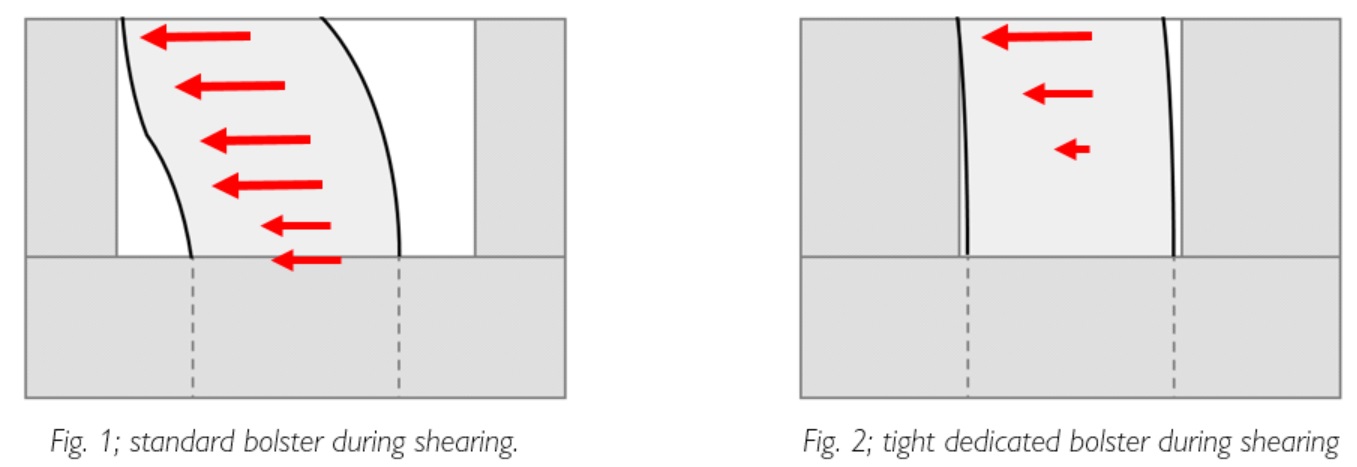Bolsters; the hidden heroes of extrusion
Bolsters; the hidden heroes of extrusion
“Oh, I completely forgot to order a matching bolster to for the die. Well, that doesn’t matter I’ll take one that I have. It might be a little bigger, but how much of a difference will it make?”
This is a common reaction when ordering a die. The bolster; a piece of steel that is needed to fill up the package to the maximum dimension. It will cost extra money to get a dedicated one so an approximate bolster will do the same job.
However, the bolster can make the difference between a good or a bad result of the die and could preserve the die.
Maximum support brings better results and longer lifetime
A tight bolster will ensure maximum support for the die during the extrusion run. The difference between a tight bolster and a larger one can be seen in things like wall thickness and the shape of the profile.

Only a couple of millimeters can make a huge difference. In the case above the customer used a standard bolster that was big enough to give room to the profile. After the first trail the customer mentioned that the wall thickness of the profile was below tolerance. Especially in the middle the wall thickness was 0,2 mm out of tolerance. Also the edges of the profile were pointed downwards.
By using a tight and dedicated bolster the profile came out according tolerance without even correcting the die. Also the edges came up to their original position. So investing in a dedicated bolster could save a lot of corrections and trails.
Also when using a tight bolster the die is protected against bending which could cause the die to crack in the corners shortening the lifetime of the die dramatically.
Preserving the die during shearing
Another very good reason to use a tight and dedicated bolster is to preserve the die during the final steps of the extrusion process. When the die is taken out of the press the material is sheared off.
When using a tight bolster the material has nowhere to go. The profile will hit the wall of the bolster quickly and all of the forces that are occurring in the shearing operation are send in to the side of the bolster opening.
When using a bolster with more space between the profile and the bolster the forces during shearing are transferred into profile. Because the profile has room to move within the bolster opening these forces are given to the die. Especially with delicate tongues or cores (heatsinks, etc.) the can be damaged when shearing with a large bolster opening.

So for the next time when asking yourself the question “should I order a dedicated bolster?” always remember that the bolster can make or break you die! It might be a simple piece of steel but this could save a lot of money in the long term.
Do you want to know more about bolsters?
Contact
adex-dies.com/en/contact







